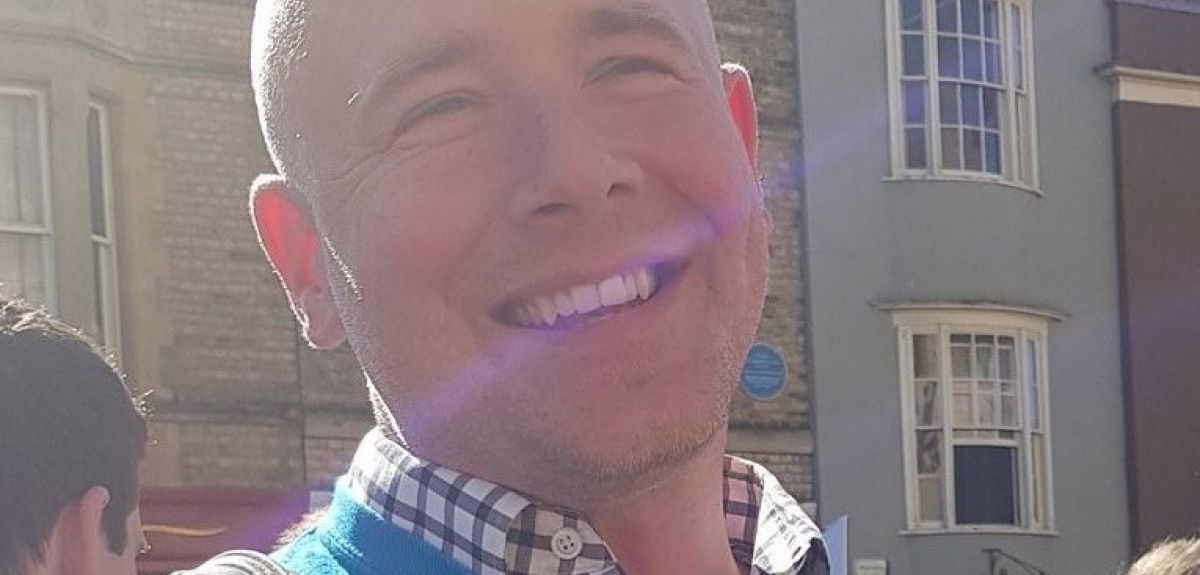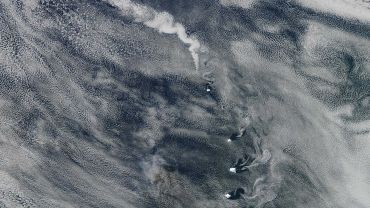
Beautiful clouds, Mr Bond: Philip Stier and why you shouldn't look up the same way again
In recent years, climate concerns have shot up the political agenda but not long ago environmentalists, who warned about the impact of human activity on the planet, were generally seen as fringe or even eccentric figures. Oxford professor, Philip Stier, is now at the forefront of climate science, as a leading researcher into clouds. He was very much ahead of the curve, but is the complete antithesis of the eccentric academic.
In the days before social media, there was little interest in what one school child had to say about climate change. And, when the young Philip announced he wanted study climate, his friends thought there was little future in it
As a schoolboy in Germany in the 1990s, he was worried about the environment, so worried he had a file where he would keep the newspaper stories which appeared from time to time. And, while his friends cruised to school by car, he doggedly rode his bike past them, as they climbed into their cars, and went to the station and where he would take a train to class. It took a bit longer and was a bit less comfortable. His friends thought he was a bit mad. But, he recalls, ‘I was agitated about climate, even then.’
 Professor Stier went to school by bike. His friends thought he was a bit mad.
Professor Stier went to school by bike. His friends thought he was a bit mad. In the days before social media, though, there was little interest in what one school child had to say about climate change. And, when the young Philip announced he wanted study climate at university, his friends and even some family, thought there was little future in it.
He laughs, ‘They said I would either become a ‘weather frog’ [a German TV forecaster] or a taxi driver...climate science wasn’t seen as likely to lead to a career.’
But Philip liked science, particularly Physics, and he was determined to study the link between climate and human activity. So, to the amusement of others, he chose to take meteorology at Munich, his local university. While many young Physicists were set on sorting out string theory and other ‘glamour’ questions, Philip wanted to apply science to environmental questions. After his undergraduate degree, he came to the UK to take a Masters and then returned to Germany to the famous Max Planck Institute for Meteorology in Hamburg for his doctorate. No one was laughing anymore.
‘It was a perfect match,’ he says enthusiastically. ‘I started doing a lot of research on aerosols (suspended particles) in the atmosphere.’
Clouds are a particular passion for Professor Stier. He admits to being able to talk at length on the subject of clouds, and sitting against a cloudy Oxford sky is clearly at home.
Clouds are a particular passion...Clouds are fantastic...I spend a lot of time looking at clouds. They have a huge effect on the Earth’s climate
Professor Philip Stier
‘Clouds are fantastic...I spend a lot of time looking at clouds, he says. ‘They have a huge effect on the Earth’s climate.’
But he is not looking to take on a role as a UK-based weather frog. Clouds, Professor Stier says, are scientifically very important in understanding climate change and are critical to research and solutions to the crisis. He explains, ‘There are natural aerosols in the atmosphere, for instance pollen, but there are other types of aerosols, man-made aerosols, caused by pollution. They modify the climate directly [by scattering and absorption of radiation] and affect clouds [which, in turn, affect the environment and climate]. This is because each cloud droplet in the atmosphere forms on an aerosol particle.’
These ‘polluted clouds’, which contain more aerosols and hence more cloud droplets, are brighter, says Professor Stier, ‘reflecting more sunlight back to space and therefore cooling the Earth’. However, aerosols also reduce the air quality and affecting people’s health, especially all over the developing world. Some of the aerosols, like sulfuric acid, are also chemically formed from gaseous emissions inside of cloud droplets. The more emissions we pump out, the more clouds become carriers of harmful pollution.
Like acid rain?
‘Yes,’ he says. ‘Like acid rain.’
Then, puncturing the sense of getting something right, he adds, ‘We tell our undergraduates, there are no wrong questions in Physics.’
Can you tell which are polluted clouds, just by looking at them?
‘That’s a big question,’ he says, with an air of knowing the answer. ‘The clouds, which contain more aerosols, are brighter but it is impossible to tell from looking at a single polluted cloud how much brighter it is than in its natural state. We are looking now at new ways how they can be identified, which includes tracks from known pollution sources, such as ships and volcanoes, or new artificial intelligence techniques that allow us to analyse vast amounts of satellite data.’
The professor is very much against the ‘doomsday’ scenarios of popular culture, where menacing clouds precipitate the end of civilisation
There may be no wrong questions, but there are some very difficult answers in respect of cloud research. The science is not as simple as: reduce emissions, everything is all right.
Professor Stier reveals that, actually, even though they may be purveyors of pollution, aerosols partly shield us from the impact of climate change.
‘It’s a balancing act,’ he says. Getting rid of air pollution may actually increase the global temperature in the short term.
‘Uncertainty is very large,’ he says, of what may be the effect. ‘There is no doubt the greenhouse gas effect is happening and we know aerosols cool the Earth.’
 Like a Bond movie: Volcano Albedo Effect Vortex clouds
Like a Bond movie: Volcano Albedo Effect Vortex cloudsBut this is not a reason to pump out more pollutants, he insists.
‘We have to go to net zero, it is very urgent,’ he says. Man-made aerosols have devastating health impacts on parts of the developing world in particular, says Professor Stier. But take away their brightening of cloud banks reflecting back the sun’s rays and the world could become warmer in the short term (while greenhouse gas effects will dominate in the long term).
There could be increasing extreme weather events and colleagues across the University provide the scientific evidence attributing our changing weather to climate change, he says. There could be tipping points for the climate. But, although it sounds like the plot of a disaster movie, the professor is very much against the ‘doomsday’ scenarios of popular culture, where menacing clouds precipitate the end of civilisation.
In a James Bond-style plotline, he admits there has been research into using technology to mimic the cooling impact of massive volcanic eruptions or to brighten clouds to lower artificially the temperature
He maintains Oxford is a key place for cloud and climate research and he says, soothingly, this is a question of fluid dynamics, although no one fully understands what clouds will do in a changing climate. But, in a James Bond-style plotline, he admits there has been research into using technology to mimic the cooling impact of massive volcanic eruptions or to brighten clouds to lower artificially the temperature.
‘There can be a significant temperature drop for as much as two years after a volcanic eruption.’
So could we use aerosols to protect us? Er...yes, perhaps, he says.
‘It would be very risky,’ says Professor Stier. ‘If we developed technology, the global temperature could be reduced but the risk is that people would do nothing about emissions so that the radiative impact of greenhouse gases continue to accumulate. It may be possible but we don’t know what would be the impact on the e.g. ozone layer or regional climate, precipitation and extreme events. That would be a very big risk as well.’
In other words, Bond villains need not apply. Professor Stier emphasises that following the science to a net zero emission future is the best way forward. But, he admits, most scientists travel too much.
‘We have to do this for work,’ he says ruefully. But, he maintains, aeroplanes in themselves are not the real problem. It is the distance, rather than technology, which creates the large carbon footprint.
It may be possible [to use cloud technology to cool the Earth] but we don’t know what would be the impact on the ozone layer or regional climate, precipitation and extreme events. That would be a very big risk
‘Going by air is no more polluting than travelling by car – but it tends to be much longer journeys,’ he says. ‘So the impact is much larger.’
Professor Stier has a hybrid car, although he rarely drives, preferring to walk or cycle. And even used to live in the home of the freeway, Los Angeles, when he could not even drive.
‘There is a public transport system, only most people don’t use it, he laughs.
It is not easy being environmentally conscious, even now. Try to get a heat pump fitted, he says. Such small frustrations aside, Professor Stier may not believe in doomsday scenarios, but he is keen to impress that there is no time to waste. And, scientific work, into climate, including clouds, is the key to the crisis.